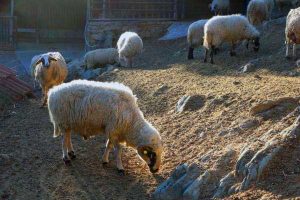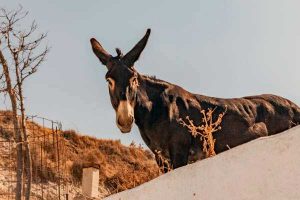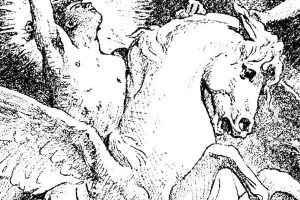Mammals in Greece
 In the diverse landscape of Greece, mammals play a crucial role in its ecosystem and cultural heritage. From the majestic brown bear to the elusive Mediterranean monk seal, Greek mammals offer a glimpse into the rich biodiversity of this ancient land.
In the diverse landscape of Greece, mammals play a crucial role in its ecosystem and cultural heritage. From the majestic brown bear to the elusive Mediterranean monk seal, Greek mammals offer a glimpse into the rich biodiversity of this ancient land.
Exploring the unique adaptations, conservation efforts, and mythological significance of Greek mammals reveals not only their importance but also their profound connection to Greece’s past and present. Whether you’re venturing into lush forests or pristine coastlines, keep an eye out for these fascinating creatures that call Greece home.
So next time you find yourself wandering through Greece’s natural wonders, take a moment to appreciate the beauty and resilience of its mammalian inhabitants. By learning more about these remarkable animals, we can better understand and protect the precious wildlife that makes Greece truly special.
Greece is home to a diverse array of mammal species, ranging from the majestic brown bear to the elusive Balkan lynx. The country’s varied landscapes provide habitats for a wide range of mammals, including wild boars, red deer, and wolves. These creatures play a crucial role in maintaining the delicate balance of Greece’s ecosystems.
 The Greek seas also host fascinating marine mammals like dolphins and monk seals. These intelligent animals captivate both locals and tourists alike with their playful antics and graceful movements in the crystal-clear waters surrounding the Greek islands.
The Greek seas also host fascinating marine mammals like dolphins and monk seals. These intelligent animals captivate both locals and tourists alike with their playful antics and graceful movements in the crystal-clear waters surrounding the Greek islands.
From high mountain peaks to lush forests and coastal areas, Greece offers ample opportunities for wildlife enthusiasts to observe these remarkable mammals in their natural habitats. Whether hiking through national parks or enjoying a boat tour around secluded coves, there are plenty of chances to encounter Greece’s unique mammalian residents.
With ongoing conservation efforts aimed at protecting endangered species and preserving their habitats, there is hope that future generations will continue to marvel at the rich diversity of Greek mammals for years to come.
Endangered Species and Conservation Efforts
Endangered species are a topic that can tug at our heartstrings. In Greece, several mammal species face the threat of extinction due to habitat loss, poaching, and climate change. Conservation efforts play a crucial role in protecting these vulnerable animals. Organizations and wildlife sanctuaries work tirelessly to ensure the survival of these magnificent creatures.
 One such example is the Mediterranean monk seal, one of the most endangered marine mammals globally. With only around 600 individuals left in the wild, conservationists are taking action to safeguard their habitats along the Greek coastlines.
One such example is the Mediterranean monk seal, one of the most endangered marine mammals globally. With only around 600 individuals left in the wild, conservationists are taking action to safeguard their habitats along the Greek coastlines.
Additionally, initiatives like reforestation projects and wildlife corridors aim to create safe havens for species like the brown bear and Eurasian lynx.
Education and awareness campaigns also play a vital role in engaging communities in conservation efforts. By understanding the importance of preserving biodiversity, we can all contribute to ensuring a brighter future for Greece’s unique mammal population.
Unique Adaptations of Greek Mammals
 Greek mammals have evolved some fascinating adaptations to survive in their diverse habitats. One of the unique features is seen in the Cretan wild goat, known for its incredible climbing abilities on steep cliffs and rocky terrains. This adaptation allows them to access food sources that other animals cannot reach.
Greek mammals have evolved some fascinating adaptations to survive in their diverse habitats. One of the unique features is seen in the Cretan wild goat, known for its incredible climbing abilities on steep cliffs and rocky terrains. This adaptation allows them to access food sources that other animals cannot reach.
The European brown bear, found in the northern regions of Greece, has a keen sense of smell that helps them locate food from long distances. Their powerful claws are also an essential tool for digging up roots and insects from the ground.
The elusive Eurasian lynx, with its distinctive tufted ears and short tail, is a stealthy predator capable of silently stalking prey through dense forests. Its excellent night vision gives it an advantage when hunting under the cover of darkness.
These adaptations showcase how Greek mammals have thrived by developing specialized traits that suit their environments perfectly.
Famous Greek animals in Mythology and Culture
 Greek mythology is rich with stories featuring mammals that have left a lasting impact on culture. One such famous creature is the mighty centaur, known for its half-human, half-horse form, often portrayed as wise and powerful beings in various tales. The graceful deer holds significance in Greek mythology, symbolizing beauty and grace. According to legend, the transformation of King Agamemnon’s daughter into a deer led to tragic consequences.
Greek mythology is rich with stories featuring mammals that have left a lasting impact on culture. One such famous creature is the mighty centaur, known for its half-human, half-horse form, often portrayed as wise and powerful beings in various tales. The graceful deer holds significance in Greek mythology, symbolizing beauty and grace. According to legend, the transformation of King Agamemnon’s daughter into a deer led to tragic consequences.
The cunning fox also plays a role in Greek folklore, seen as clever and resourceful creatures often outsmarting other animals in stories. Wolves are another prominent figure in Greek myths, representing both danger and loyalty depending on the tale being told. From Artemis’s association with bears to the sacredness of dolphins to Poseidon, these mammals continue to capture imaginations through their symbolic meanings and roles within ancient narratives.
In modern times, these mythological connections persist through various cultural references like art, literature, and even sports team mascots inspired by these legendary creatures from Greek lore.
Where to Spot Greek Animals in the Wild
Are you ready to embark on an exciting wildlife adventure in Greece? The lush forests, rugged mountains, and pristine coastline offer the perfect habitat for a variety of fascinating mammals waiting to be discovered.
Head to the Pindos Mountain range in northern Greece for a chance to spot elusive species like brown bears, wolves, and wild boars roaming freely in their natural environment. Keep your eyes peeled while hiking through the dense forests or scanning the open meadows for these magnificent creatures.
For those interested in marine mammals, a boat trip around the Greek islands might lead you to encounters with dolphins and monk seals gracefully swimming in crystal-clear waters. These enchanting animals are a sight to behold as they playfully navigate the waves alongside your vessel.
Don’t forget about Mount Olympus, known not only for its mythological significance but also as a hotspot for deer, foxes, and squirrels. The ancient surroundings provide an unforgettable backdrop for observing these agile creatures going about their daily routines.
Whether you’re exploring remote wilderness areas or wandering through charming villages nestled among olive groves, keep your camera handy and your senses alert – you never know what majestic mammal might cross your path during your Greek escapade.
Interesting Facts
Greek mammals are full of fascinating facts that will leave you intrigued. Did you know that the Cretan wildcat is a distinct subspecies found only in Greece? It’s true! These elusive felines are expert climbers and hunters, making them a sight to behold in the rugged Greek landscape.
Another interesting mammal native to Greece is the Balkan chamois, known for its impressive agility on steep mountain slopes. Their curved horns and nimble hooves help them navigate their rocky habitats with ease, showcasing their remarkable adaptations for survival.
The Eurasian otter can also be found in Greek rivers and wetlands. These playful creatures are excellent swimmers, using their webbed feet to glide through the water effortlessly while hunting for fish and other prey.
Greek mammals have woven themselves into the country’s rich cultural tapestry, appearing in ancient myths and legends as symbols of strength and cunning. Keep an eye out for these incredible creatures during your next visit to Greece – you never know what captivating encounter awaits you!
